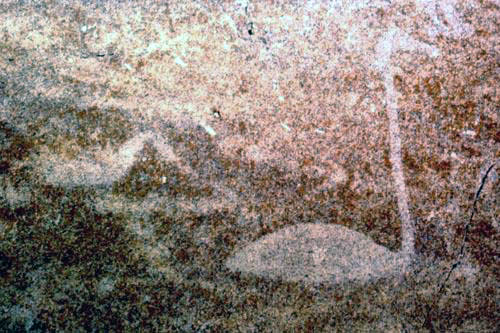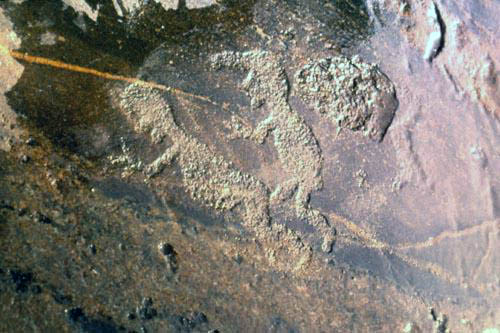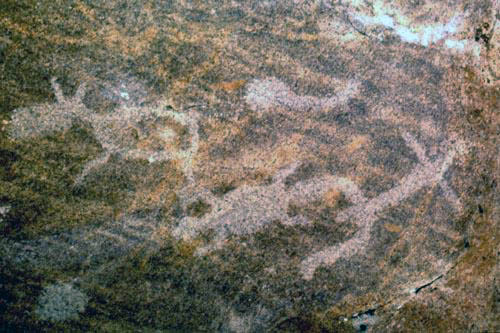Karelian petroglyphs became one of the most popular and outstanding monuments of ancient culture within Norhtern Europe. Two rock art localities are known: on the eastern shore of Onega Lake (Pudozhsky district) and in the White Sea area in the lower reaches of Vyg River (Belomorsk district).These are the largest assemblages of the carvings in the European Russia, they dated back to the Neolithic period. About 1200 individual petroglyphs have been found on the eastern shore of Onego Lake.
 |
 |
 |
Onego Lake Rock Art assemble is located on the Besov Nos (Demon's Cape) of the eastern shore of Onego Lake. Onego carvings are differed from others with their metaphoric character, fantastic nature and exotics of images. Local inhabitants attributed rock art to the activity of the "evil spirit". This resulted in the name of the area, Besov Nos (Demon's Cape) and later in attempts to neutralize the "devilish pictures" by carving Christian crosses on the figures of the demon and a swan, probably dated back to 15-th century.
Rock art galleries of the White Sea and Onego Lake are the real pearls of ancient culture world wide. They indeed, are the archeological “visit card” of Karelia. Not by chance, in majority of publications they are called as a “stone book”, “stone chronicles” or “awareness shop”, and considered worth being registered in the World Heritage List.
